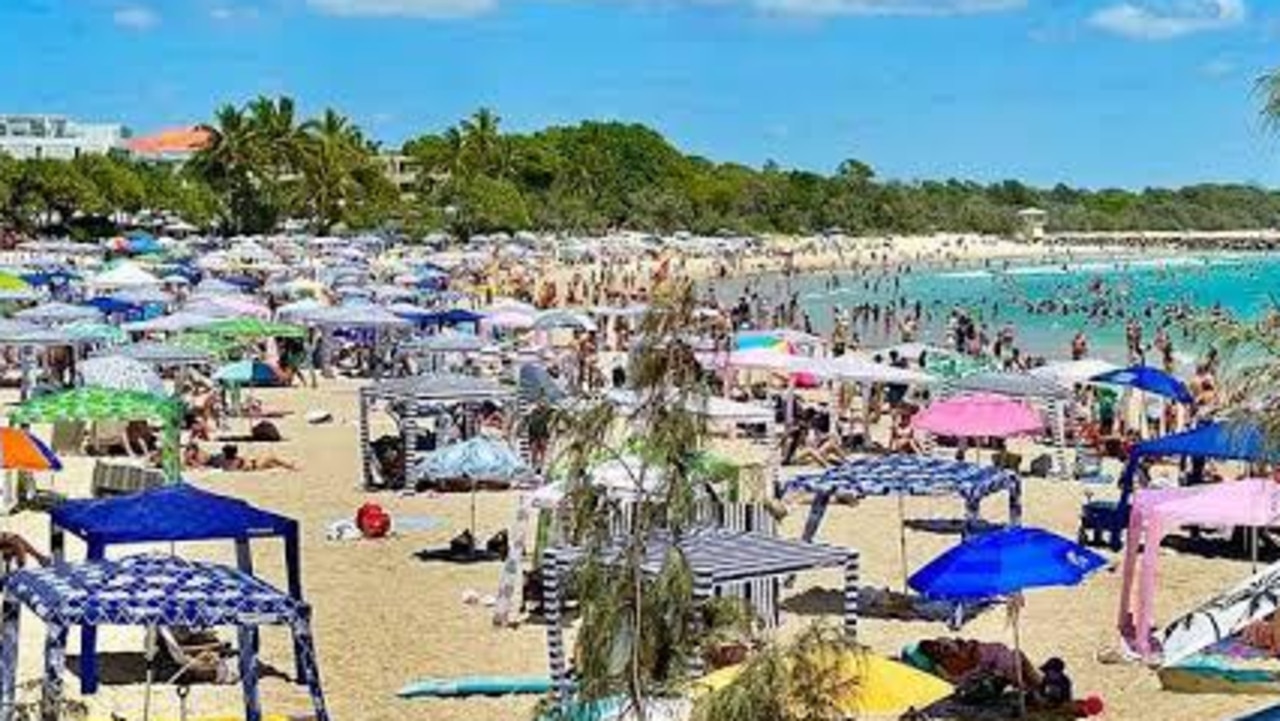Fire pit ideas Australia: How American trend is changing Aussie backyards forever
It wasn’t that long ago this backyard oddity was just something you saw in America, now it’s the new must-have.

Outdoors
Don't miss out on the headlines from Outdoors. Followed categories will be added to My News.
It wasn’t that long ago firepits were something of a backyard oddity you saw in Hollywood films or during a trip to America, now it’s Australia’s new must-have.
This is extract from Firepit Barbecue by Ross Dobson explains what all the fuss is about.
In the most basic sense, a firepit is just that: a pit of fire.
What started as a simple hole in the ground, in which burning wood supplied heat for warmth and cooking, has become over the centuries more practical and safe through design. What many of us think of as a firepit is simply a vessel that burns wood, over which a suspended grill or hotplate can be fitted to cook food.
I’ve seen the most basic of firepits – nothing more than a recycled metal drum with holes punched in the side to supply air flow and enable the wood to burn (remember: a fire needs oxygen). A grill, such as an old cooking grill from an oven, is placed on top of the metal drum. Once the smoke and flames have subsided, it is ready to cook food over the heat emitted from the hot charcoal.
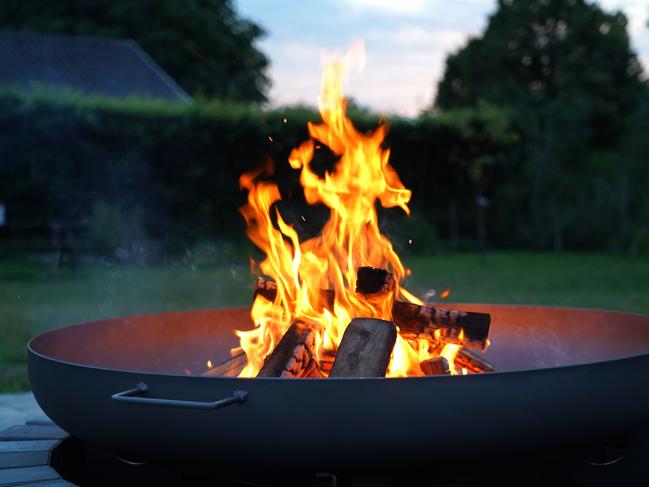
It is the heat from the charcoal that is required for cooking. You will notice that when wood is burning, it’s almost as if it’s alive: it hisses, spits and groans. These noises are made by the burning of the minerals and water in the wood, and the side effect of this is smoke. Smoke, and soot, is released while the volatiles in the wood are still burning away. And smoke is something you don’t want when you’re cooking on an open firepit. Cooking on a smoky fire gives an unpleasant diesel-like taste to the food. When the noise and smoke subsides, you are left with charcoal, which burns at a higher temperature than wood and should glow and pulse with heat. It will have few visible flames, releasing only pure heat. It takes time to achieve this and patience is required.
Timber for your firepit
You might think wood is wood – but there are many different types of trees. Soft timber from trees such as cypress, pine and fire burns too quickly and is no good for the firepit. These woods might be less expensive, but they won’t go the distance. Do not burn treated timber from trees, and from other large plants that are toxic. Many of us may know that oleander, for example, is toxic, and shouldn’t be burnt anywhere near people. The same goes for any treated or painted timber.
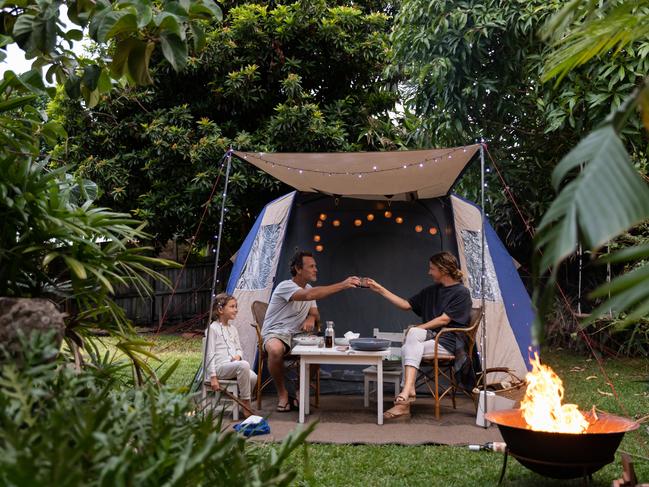
In Australia and New Zealand the best timber to burn is hardwood gum or eucalyptus.
In Australia timber varies slightly from state to state. Generally speaking, the timbers that burn the longest are jarrah, iron bark, box and also river red gum.
The same applies when choosing timber for burning in North America, the United Kingdom and Europe. Timber with the least pitch (resin) or sap is the best choice for burning on the firepit. In North America this is timber from maple, ash, birch and oak. The most widely available timbers for burning in the United Kingdom and Europe are similar to North America, but also include fruit trees with hard timber, such as cherry and apple.
The best wood for burning will feel dense, it should be grey in colour (definitely not green), hollow sounding when two logs are tapped together, and free of fibrous bark, or at least indications that bark can be broken away easily.
What you are looking for is wood that is as dry as possible. Green wood, or wood with some bark attached, indicates there is moisture in the wood, which will produce more smoke and requires more energy to burn out the water and minerals. Worse still, it might not even burn at all. Always go for grey, dry and dense.
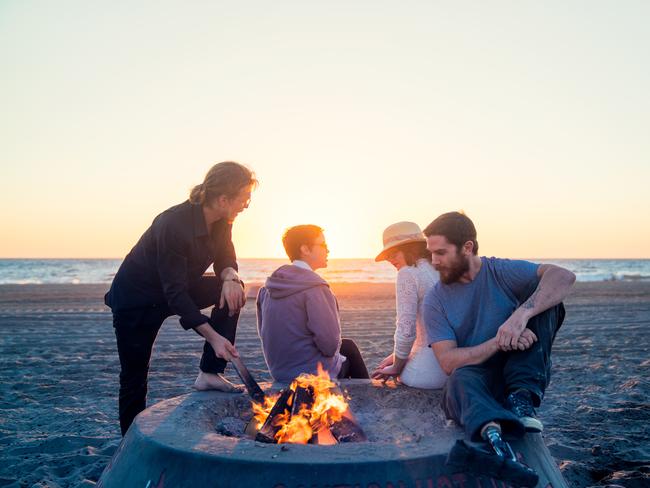
Preparing the firepit for cooking
Many modern firepits will come with an attachable grill, which is perfect for cooking.
Remove the grill while you fire up the coals. Take two medium-sized pieces of firewood and place them in the centre of the firepit, parallel to each other and about 20cm apart. Take two more similar-sized pieces of wood and place these on top, in the opposite direction, parallel and 20cm apart.
There will be a gap in the centre – this is where you ignite the fire.
Crumple up some newspaper into loose balls and put these between the timber (egg cartons work a treat, too). Now arrange some kindling around the paper to look like a tee pee. Light the newspaper in several places, allowing it to catch and burn – it won’t take long before the kindling catches fire, but the large pieces of timber will need some more time. You can use a piece of cardboard or a baking tray to fan air into the fire and encourage it to burn. Timber needs air and space to burn so don’t overcrowd it. Give it time and space to turn into coals. It is not wood per se that you need to cook with; it’s what the wood becomes.
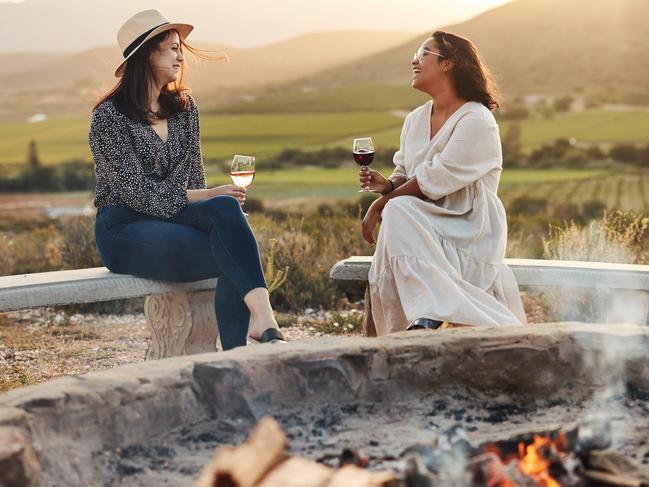
When is the firepit ready?
Over a period of about two hours, the timber becomes black and ultimately turns into charcoal. It will break up into small pieces and is supercharged with energy and glows with intense heat. Coals about the size of a golf ball, and no larger than a tennis ball, are what you are looking for to cook with. And, unlike wood, which needs space to burn, these hot coals work best when pushed together to generate and maintain optimum heat for cooking.
The easiest way to test if your firepit is ready for cooking is to trust your own senses. Firstly, use your eyes: you want to see small pieces of red-hot coals with a minimal amount of smoke.
Secondly, use your sense of touch. Put the palm of your hand about five to 10cm over the centre of the firepit. You should only be able to hold your hand there for some two to three seconds. Replace the grill over the firepit and give it around 10 minutes to heat up.

What tools do you need?
You can treat the firepit like any open fireplace you have inside the house. That is, you might have a fireplace kit which can include a hand shovel, ember movers, bellows. These will all be useful – but not necessary.
I personally find something that is long and made of metal to poke the fire is essential, plus a couple of pairs of long metal cooking tongs. A dustpan and brush is always good to have on hand for cleaning up, once the firepit is completely cool.
What to cook on a firepit
You can cook almost everything that you can cook on a conventional barbecue. But, do remember that the firepit does not have a lid that can close and trap in heat, acting like an oven of sorts. Keep in mind that smaller cuts of meat cook best on a firepit. Chicken fillet is ideal; darker thigh meat, with lines of fat, is ideal.

You can, of course, use chicken breast fillet, but I personally find this too dry and not as flavoursome as thigh. Cute little trimmed lamb cutlets are perfect. The bone is all ready to use as a utensil to hold the chop and wolf down the tender meat. Pork and beef cutlets are good, too, as are most fillets of red meat: lamb, beef and pork.
While larger bits of meat can be cooked on the firepit, they do require more attention and patience. To ensure large dense cuts of meat are cooked through, a good tip is to wrap the seared meat in foil and move to the edge of the firepit. Here the heat is less intense and the meat can cook through without burning. Many vegetables are perfect for cooking on the firepit. Whole or thickly sliced eggplant and capsicum are ideal; so too are root vegetables like sweet potato and potato, wrapped in foil and ready to be smothered in butter, sour cream, yoghurt or labneh. Sweet corn, too, cooks to perfection on the firepit.

Patiently turn the corn over the heat until the kernels burst with a golden flavour that’s hard to beat.
With seafood, large prawns and lobsters fare well too, especially when left in their shell, which acts as a natural protective armour.
Setting up the wood stack correctly will minimise the time spent igniting the fire and maximise your enjoyment as an outdoor master chef! Red and white meats, and a variety of vegetables, are perfect to cook over a firepit’s open grill.
This is an extract from Firepit Barbecue by Ross Dobson (Murdoch Books).
Originally published as Fire pit ideas Australia: How American trend is changing Aussie backyards forever




